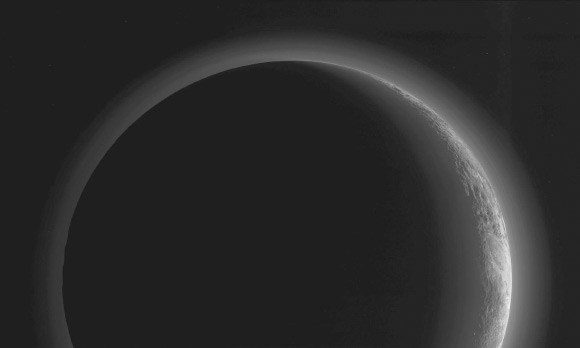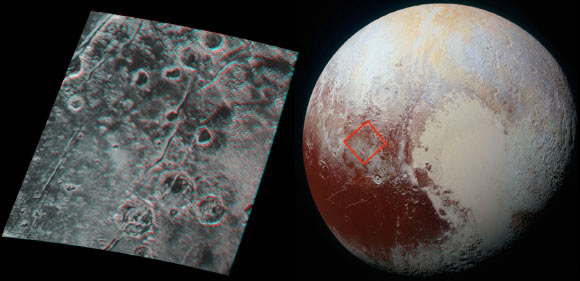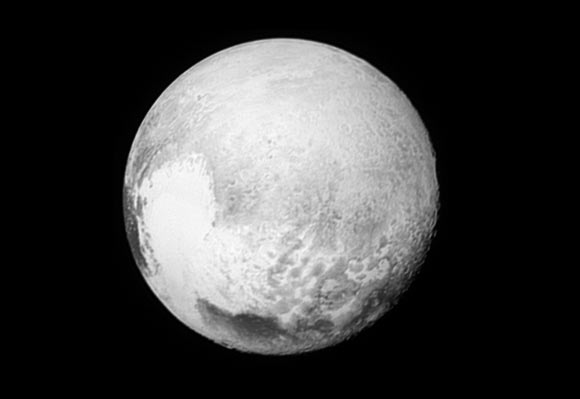Scientists on NASA’s New Horizons mission have released a remastered image of Pluto’s crescent, a new, low-resolution image of the dwarf planet and a 3D stereoscopic image of its surface.

This wide-angle image was made just 15 minutes after New Horizons’ closest approach to Pluto on July 14, 2015. It was taken with New Horizons’ Multi-spectral Visible Imaging Camera from a distance of 11,000 miles. Image credit: NASA / Johns Hopkins University Applied Physics Laboratory / Southwest Research Institute.
About a month ago, New Horizons team members released an amazing but incomplete image of Pluto’s crescent. Thanks to new processing work, they have finally shared the full image.
The image, taken when New Horizons was 11,000 miles (18,000 km) away, shows haze layers of Pluto’s thin atmosphere extending all the way around the dwarf planet.
The shadow of Pluto cast on its atmospheric hazes can also be seen at the uppermost part of the disk.
On the sunlit side of the dwarf planet, the smooth expanse of the icy plain Sputnik Planum is flanked to the west by rugged mountains up to 11,000 feet (3,500 m) high, including Norgay Montes in the foreground and Hillary Montes on the skyline.
Below of Sputnik Planum, rougher terrain is cut by apparent glaciers.

3D stereoscopic image of Pluto’s surface (requires red/blue stereo glasses for viewing) shows a region 180 miles (300 km) across, centered near longitude 130 E, latitude 20 N. Image credit: NASA / Johns Hopkins University Applied Physics Laboratory / Southwest Research Institute.
The backlighting highlights more than a dozen high-altitude layers of haze in Pluto’s atmosphere.
The horizontal streaks in the sky beyond the planet are stars, smeared out by the motion of the camera as it tracked Pluto.
The very first 3D stereoscopic image of Pluto’s surface shows an ancient, heavily cratered region, dotted with low hills and cut by deep fractures indicating extension of the dwarf planet’s crust.
In addition to transmitting new high-resolution images, New Horizons is also returning low-resolution images – such as the third one – to improve maps of other regions.

This low-resolution image of Pluto was taken by New Horizons’ Long Range Reconnaissance Imager on July 13, 2015, from a range of 1.03 million miles (1.7 million km). It provides new details to help the New Horizons team map Krun Macula (the prominent dark spot at the bottom of the image) and the complex terrain east and northeast of Tombaugh Regio. Image credit: NASA / Johns Hopkins University Applied Physics Laboratory / Southwest Research Institute.
New Horizons is currently 3.18 billion miles (5.12 billion km) from our planet and 79.9 million miles (128.6 million km) beyond Pluto, with all systems functioning normally.







